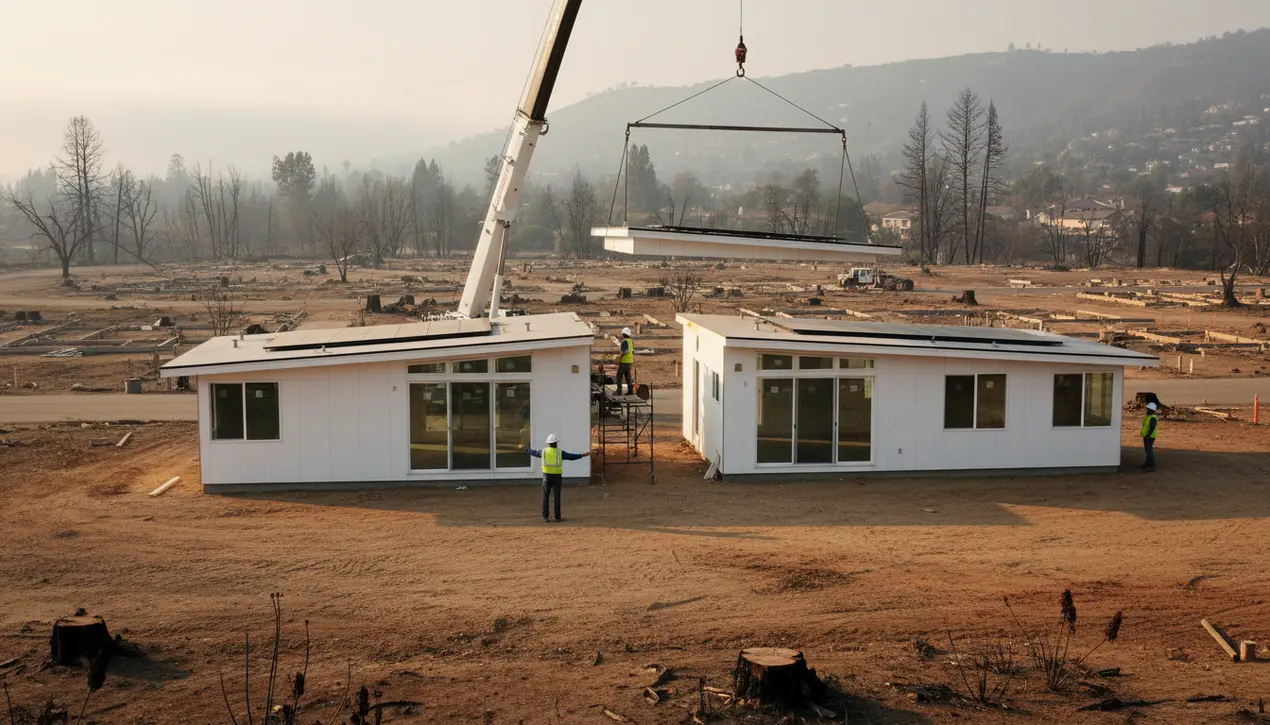
Otherreal estateConstruction and Development
In L.A.’s fire zone, factory-built houses are meeting the moment.
RA
Rachel Adams
5 hours ago7 min read
The 3:20 a. m.phone call that ripped Steve Gibson and his wife from sleep on January 8 carried a primal warning: the Eaton fire was coming for their Altadena home. They fled in fifteen frantic minutes, clutching passports, insurance papers, three pairs of underwear, and their little dog, Cantinflas, clinging to the hope this was a temporary disruption.That hope evaporated with the news that their house of 24 years, a 1920s Craftsman, was ash, their entire block erased by the flames. This personal catastrophe mirrors a broader, agonizingly slow recovery across Los Angeles's fire zones.In Altadena alone, where the Eaton fire consumed over 5,000 houses, the landscape ten months later is one of cleared lots and profound loss, with only a few hundred rebuilds underway and, as of mid-November, a single completed structure—an accessory dwelling unit. Yet, within this bleak tableau, a quiet revolution in residential construction is taking root, one that could redefine how communities recover from climate-amplified disasters.Homeowners like the Gibsons, faced with the prospect of a two-to-three-year traditional build, are turning en masse to prefabricated construction, a method they'd never previously considered. Companies such as Cover, Villa, and Samara, once focused on backyard ADUs, are now deploying their factory-built solutions for full single-family homes in Altadena, Pacific Palisades, and Malibu, offering a lifeline of speed and certainty.For the Gibsons, partnering with Cover meant their new home's components were fabricated in a Gardena factory in about a month, with on-site assembly adding just over two months to the timeline, a breathtaking pace compared to the conventional alternative. This speed is born of efficiency, as Cover CEO Alexis Rivas explains, by moving the complex work—insulating, waterproofing, integrating mechanical and electrical systems into wall, floor, and roof panels—into a controlled factory environment, turning the construction site into a swift assembly line.This approach not only accelerates rebuilding but also acts as a crucial force multiplier in a looming crisis. As Villa CEO Sean Roberts warns, the coming year will see the local construction labor base 'really, really, really stretched' by the sheer volume of rebuilding, driving up costs and creating paralyzing uncertainty for on-site projects.The prefab industry's response is a diverse ecosystem of options, showcased in a temporary installation by UCLA's cityLAB on an empty Altadena lot, designed to dismantle the lingering stigma around manufactured homes. The styles range from Cover's modern, Eichler-inspired designs to Villa's purpose-built models that respectfully echo the neighborhood's lost Craftsman aesthetic, with base prices starting as low as $147,000 to aid those underinsured.This shift is not merely about replacing what was lost but building back better. New prefab homes are inherently more resilient, with companies like Cover using non-combustible steel frames, and they are universally more sustainable, featuring all-electric systems and mandatory solar roofs, as seen in the ultra-efficient models from startups like Cosmic.The movement is expanding to include multifamily solutions, like a 14-unit prefab bungalow court for low-income residents by Beacon Housing, demonstrating the method's scalability. Despite bureaucratic delays and infrastructure challenges, this concentrated, disaster-driven adoption represents what cityLAB's Ryan Conroy calls a 'catalytic moment for the industry,' pulling prefab into the mainstream of Southern California's infill construction and proving that from the ashes, a faster, smarter, and more resilient way to build can emerge.
#prefab homes
#factory-built housing
#wildfire recovery
#Altadena
#rebuilding
#featured
Stay Informed. Act Smarter.
Get weekly highlights, major headlines, and expert insights — then put your knowledge to work in our live prediction markets.
Related News
Comments
Loading comments...
© 2025 Outpoll Service LTD. All rights reserved.